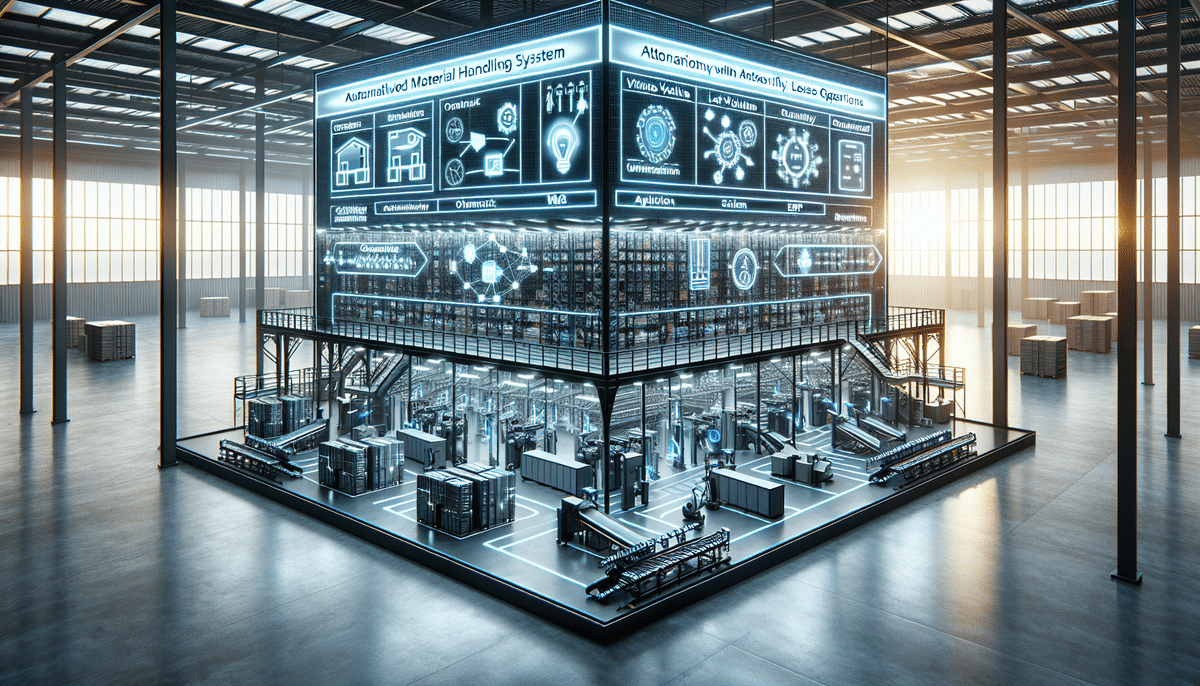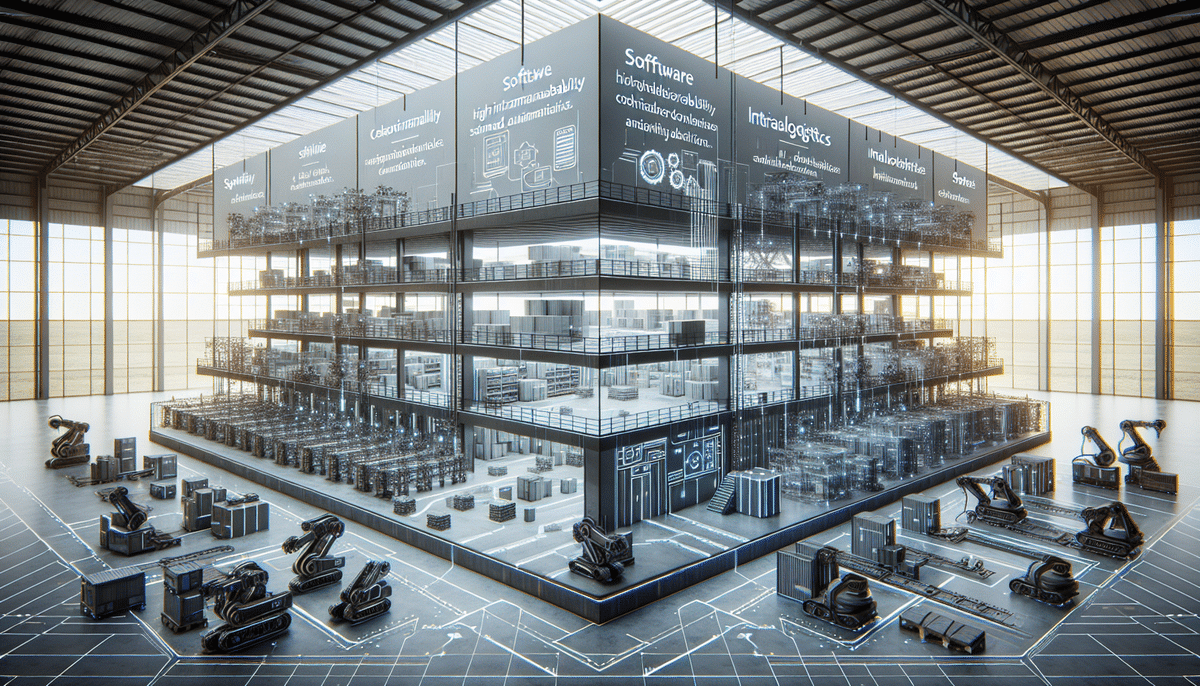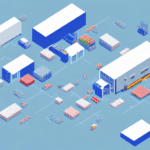Introduction to Automated Material Handling Systems
Automated material handling systems are pivotal in modern warehouses and distribution centers. By automating tedious and repetitive tasks, these systems enhance accuracy, safety, and enable businesses to manage increasing order volumes efficiently. Leading manufacturers in this domain include Dematic and Knapp. This article provides an in-depth analysis of the differences between these two systems, their advantages and disadvantages, technical specifications, costs, impact on supply chain efficiency, successful case studies, and key factors to consider when selecting between them.
Understanding the Importance of Automated Material Handling Systems
In today's competitive market, businesses must process and deliver orders swiftly with high accuracy and reliability. Automated material handling systems facilitate this by utilizing robots, conveyors, cranes, and other equipment to move goods efficiently through storage, picking, packing, and shipping processes. Integration with other systems, such as Warehouse Management Systems (WMS) and Enterprise Resource Planning (ERP) systems, provides enhanced visibility, planning, and control.
Key Differences Between Dematic and Knapp Systems
Focus and Specialization
Dematic specializes in warehouse automation solutions, making their systems ideal for high-volume, low-mix operations where numerous identical items are stored and handled. In contrast, Knapp excels in distribution center automation, better suited for low-volume, high-mix operations involving a diverse range of items.
Modular Design Approach
Dematic systems utilize standardized modules that can be configured and combined for customized solutions, offering flexibility and ease of maintenance. Conversely, Knapp systems employ proprietary modules that are tightly integrated, which may limit flexibility but enhance system cohesiveness.
Technology and Efficiency
Dematic heavily relies on conveyor-based solutions, ensuring high throughput and stability. Knapp incorporates a mix of conveyors, shuttles, and robots, which provides higher efficiency and scalability, especially in dynamic environments.
Advantages and Disadvantages of Dematic Systems
Advantages
- High Throughput and Accuracy: Conveyor-based design and optimized flow control algorithms ensure efficient operations.
- Scalability and Flexibility: Modular design accommodates a wide range of products and operations.
- Excellent Integration: Seamless integration with WMS, ERP, and Manufacturing Execution Systems (MES).
- Advanced Features: Includes voice and visual picking, automated replenishment, and real-time performance monitoring.
Disadvantages
- Higher Costs: Initial and maintenance costs are elevated due to sophisticated components.
- Longer Lead Times: Customized designs require extended installation and testing periods.
- Energy Consumption: Reliance on conveyors leads to higher energy usage.
- Complex Management: Advanced features necessitate comprehensive training and management.
Advantages and Disadvantages of Knapp Systems
Advantages
- High Flexibility and Adaptability: Modular and scalable design with diverse technologies.
- Lower Installation and Maintenance Costs: Standardized modules simplify integration and reduce costs.
- Energy Efficiency: Use of energy-efficient shuttles and robots decreases energy consumption.
- User-Friendly: Intuitive interfaces reduce training and management efforts.
Disadvantages
- Lower Throughput and Accuracy: Dependence on shuttle- and robot-based solutions may reduce efficiency compared to Dematic.
- Limited Integration: Relatively closed architecture with fewer APIs limits system integration.
- Fewer Advanced Features: Lacks some advanced functionalities like voice and visual picking.
- Limited Product Handling: Primarily focused on small and medium-sized items.
Comparative Analysis of Technical Specifications
Throughput Capacity
Measured in units per hour (UPH) or cases per hour (CPH), Dematic systems generally offer higher throughput due to their conveyor-based design. This makes them suitable for environments with high product turnover.
Pick/Packed/Ship Accuracy
Dematic systems typically achieve higher accuracy rates through advanced flow control algorithms and precise automation. Knapp systems, while accurate, may not match the precision of Dematic in high-volume settings.
Product Handling Capability
Knapp systems are often more adaptable to various product sizes, weights, and configurations due to their use of robots and shuttles, making them suitable for diverse inventory.
Modularity and Scalability
Dematic's standardized component approach allows for greater modularity and scalability, facilitating easy adjustments to changing operational needs.
System Integration
Dematic systems offer superior integration capabilities with other core systems like WMS, ERP, MES, and Transportation Management Systems (TMS), thanks to their open architectures and robust APIs.
Cost Analysis of Implementing Dematic vs Knapp Systems
Implementing automated material handling systems involves significant investment, typically ranging from tens to hundreds of millions of dollars. Key cost components include hardware and software, installation and engineering, operational maintenance, risk mitigation, and opportunity costs.
- Dematic: Higher upfront and maintenance costs, but potentially lower operational risks due to higher throughput and accuracy.
- Knapp: Lower initial costs but may incur higher operational expenses over time due to lower throughput and accuracy.
When considering ROI, businesses should analyze specific operational data and projections to determine which system offers the best long-term value. According to a McKinsey report, automation can lead to a 20-30% increase in productivity, which should be factored into the cost-benefit analysis.
Impact on Supply Chain Efficiency
- Increased Order Processing Speed: Faster and more accurate fulfillment enhances customer satisfaction.
- Reduced Labor Costs: Automation minimizes the need for manual labor, optimizing resource utilization.
- Improved Inventory Management: Enhanced tracking and storage reduce inventory carrying costs.
- Greater Agility: Ability to quickly adapt to market changes and demand fluctuations.
- Enhanced Safety: Reduced accidents and errors through automation.
The effectiveness of these impacts depends on system design, integration level, data quality, and operator proficiency. Studies from the APICS highlight that well-implemented automation can improve supply chain efficiency by up to 25%.
Case Studies: Dematic and Knapp Systems in Action
Dematic System Implementation in E-commerce
A leading e-commerce retailer partnered with Dematic to optimize warehouse operations facing high order volumes and diverse product categories. The customized solution included modular conveyor systems, automated storage and retrieval systems (AS/RS), voice and visual order picking technologies, and integrated WMS. Outcomes included a 40% increase in throughput, a 30% boost in accuracy, and a 20% reduction in operational costs, along with improved working conditions and reduced order processing times.
Knapp System Implementation in Food Distribution
A large food manufacturer implemented a Knapp system to enhance its distribution center operations, handling high volumes of small and medium-sized items with complex order profiles. The solution featured shuttle-based systems, multi-level order picking, integrated quality control through automated scanning and vision technologies, and integrated Transportation Management Systems (TMS). Results included a 50% reduction in lead times, a 25% decrease in errors and damages, and a 30% increase in productivity, along with enhanced brand reputation and customer loyalty.
Choosing Between Dematic and Knapp Systems: Key Considerations
- Operational Needs: Dematic is ideal for high-volume, low-mix operations, whereas Knapp suits low-volume, high-mix environments.
- Available Space: Dematic systems may require more space and have complex layouts, while Knapp systems are more space-efficient.
- Integration Requirements: Dematic offers better integration with other systems due to its open architecture.
- Budget and ROI: Consider both upfront and lifetime costs, along with expected returns based on operational projections.
- Vendor Experience and Reputation: Both Dematic and Knapp are reputable, but their expertise varies based on specific operational needs.
Careful analysis of these factors ensures the chosen system aligns with the business's strategic goals and operational requirements.
Conclusion: Selecting the Right Automated Material Handling System
Choosing between Dematic and Knapp automated material handling systems involves comprehensive analysis and evaluation of operational needs, space constraints, integration capabilities, budget, and vendor expertise. Both systems offer significant benefits in terms of efficiency, productivity, and profitability. By selecting the system that best fits their specific requirements, businesses can enhance their competitive edge, improve customer satisfaction, and achieve their strategic objectives.




















